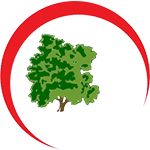Y1 & Y2 Week 3 4th May

PHONICS
Y1
This week we would like you to think about the different ‘i’ sounds.
You could...
- Think of a word for each of these and write them down
- Read different words containing these sounds
- Print off a game or make a game https://www.twinkl.co.uk/resource/t-l-5347-igh-sound-family-game
- Write the words using the correct sound
- Play a game online https://new.phonicsplay.co.uk/
- Read these alien words containing different ‘a’ sounds? Can you copy them out and add the sound buttons?
trinp gly vife stiep plighn
- Create your own alien words and add the sound buttons
Y2
This week we continue to read, spell and use different homophones and also spell conjunctions (words that joins two words or phrases together). What are homophones? Watch this video… https://www.bbc.co.uk/bitesize/topics/zqhpk2p/articles/zc84cwx
This week’s words are…
night knight
blue blew
hole whole
because
so
that
or
You could...
- Read the words and talk about how they are spelt. Can you verbally put them into a sentence?
- Write the words by copying. Adults please say each word and then put them into a sentence. For example… There is a hole in my shoe. Did you eat the whole cake
- Write the words from memory… (put them into a sentence to give each word context. For example- The sky is blue. He blew me a kiss.)
- Write this words into sentences using adjectives and conjunctions. For example- The knight turned blue because he was cold.
MATHS – Time
Y1
Y1 – In Year 1 children are expected to be able to…
- sequence events in chronological order using language [for example, before and after, next, first, today, yesterday, tomorrow, morning, afternoon and evening]
- recognise and use language relating to dates, including days of the week, weeks, months and years
- tell the time to the hour and half past the hour and draw the hands on a clock face to show these times.
You could…
- Go on a time hunt – go around your house and see how many things you can find that tell the time – clocks, watches, clock on the oven/microwave, phone. You could take photos or make a list or draw pictures of them. Can you read the time on any of them? How are they the same or different? (Do they have numbers 1,2,3,4 or numerals I, II, III, IV? Are they all the same shape? Do they have hands?)
- Make a clock – use a paper plate or draw round a plate to make a paper/card circle and cut it out. Write the numbers around the edge of the circle – make sure you write them the correct way around and start in the right place. You could look at a clock to help you. Draw and cut out 2 hands, a longer one and a short one. (you could do these on a different colour paper or colour them in)
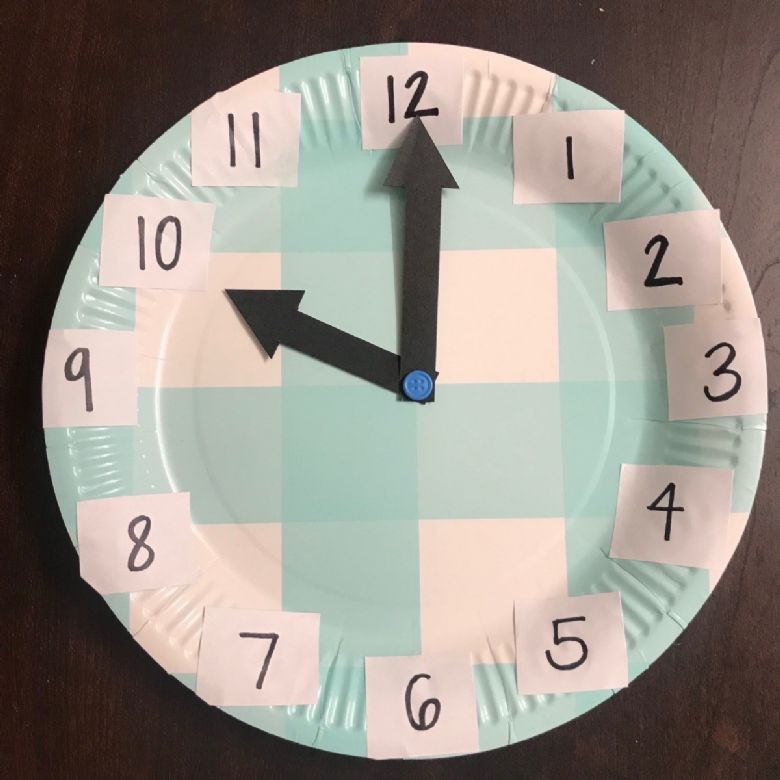
- Watch this video to help you learn the features of a clock https://www.youtube.com/watch?time_continue=11&v=3Posbu-VKxU&feature=emb_logo&disable_polymer=true
- Use your clock to make different o'clock times. Can you make the hands of your clock tell these times; 2 o'clock, 7 o'clock, 11 o'clock, 3 o'clock, 9 o'clock.
- When teaching time we often show the children a number line with numbers 1-12 on and then explain that this is similar to a clock and when it gets to 12 it goes back to 1.

- Can you think of any more ‘o’clock times and any things you do at different times? (Joe Wicks at 9 o clock, lunch at 12 o clock, bedtime at 7 o clock etc)
- Use your clock to make different half past times. Can you make the hands of your clock tell these times; Half past 2, half past 8, half past 10, half past 5, half past 3.
- Solve some problems for time
Which time would you choose and why?
- Mum says that you can choose to go to bed at 6 o clock or 8 o clock.
- Dad says you can set your alarm to get up at half past 7 or half past 10.
- Mum says you can go to bed at 7 o clock or half past 7.
Sort these times from earliest to latest;
- 1 o clock, 6 o clock, 4 o clock
- 12 o clock, 7 o clock, 8 o clock.
- Half past 3, half past 9, half past 1
- 10 o clock, half past 2, 6 o clock.
Can you say or write the sentences to put these times in order? Eg) 7 o clock is earlier than half past 9 but later than 6 o clock.
- 4 o clock, 7 o clock, 2 o clock
- Half past 3, half past 9, half past 1
- 8 o clock, half past 10, 4 o clock.
Y2 – In Year 2 children are expected to be able to…
- compare and sequence intervals of time
- tell and write the time to five minutes, including quarter past/to the hour and draw the hands on a clock face to show these times
- know the number of minutes in an hour and the number of hours in a day.
This week you could…
- Practice counting in multiples of 5 to 60
- Discuss with the children how many seconds there are in 1 minute, how many minutes there are in 1 hour, how many hours are there in the day. Discuss the things we measure in seconds (running race), minutes (baking cakes) and hours (long journeys). Make a list of the different things.
- Make predictions and then see how many times they can complete a task in a minute e.g. writing their name, making a tower out of lego bricks, jumping up and down.
- Challenge the children to find out how many minutes there are in a quarter of an hour https://www.topmarks.co.uk/time/teaching-clock
- Solve problems such as what time it would be an hour later or an hour earlier? For example- Sarah had her breakfast at 8 o’clock and started school 1 hour later. What time did she start school? Use your clocks to help.
- Solve problems Once that the children know that there are 60 mins in 1 hour, can they work out problems, e.g how many minutes in 1hr and 15 mins. Once the children are able to count around the clock in multiples of 5, they can then work out problems to work out what the time would be in 5 mins, 10 mins. What time would it be in ¼ hour? What time would it be in ½ hour? Below are some examples of questions you could ask...
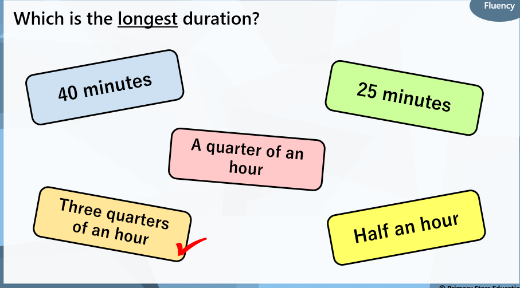
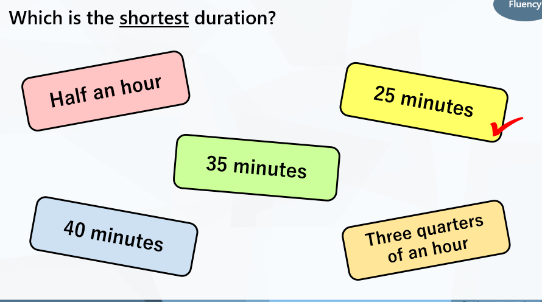
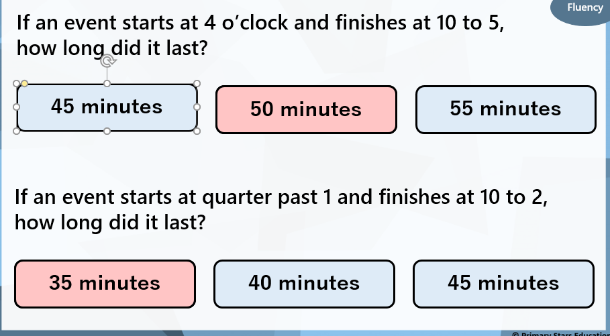
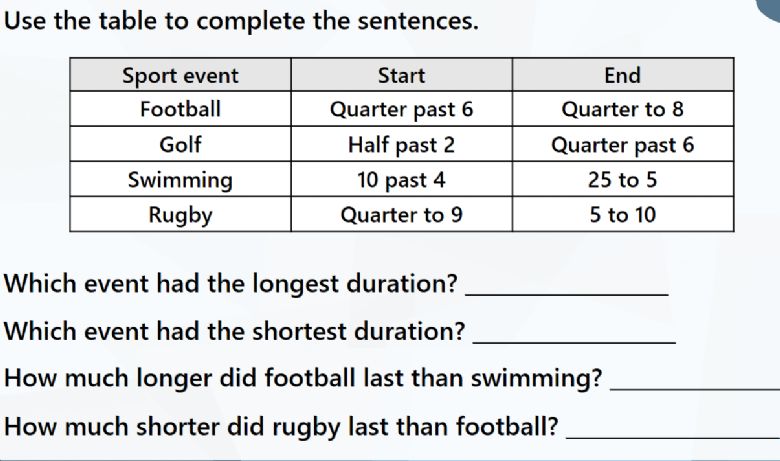
|
|
|||
ENGLISH Poetry
Listen to this poem by Kit Wright
https://www.youtube.com/watch?v=ReP3gVrOfpI
The Magic Box, By Kit Wright
I will put in the box the swish of a silk sari on a summer night,
fire from the nostrils of a Chinese dragon,
the tip of a tongue touching a tooth.
I will put in the box a snowman with a rumbling belly
a sip of the bluest water from Lake Lucerne,
a leaping spark from an electric fish.
I will put into the box three violet wishes spoken in Gujarati,
the last joke of an ancient uncle,
and the first smile of a baby.
I will put into the box a fifth season and a black sun,
a cowboy on a broomstick and a witch on a white horse.
My box is fashioned from ice and gold and steel,
with stars on the lid and secrets in the corners.
Its hinges are the toe joints of dinosaurs.
I shall surf in my box on the great high-rolling breakers of the wild Atlantic,
then wash ashore on a yellow beach the colour of the sun.
The you could...
- Talk about the things Kit wants to put in the box. Do you know what they all are or what they mean? If not try and find out.
- Are they all things? Can you find the sights, smells, sounds, wishes?
- If you could choose 3 things to put in the box what would you choose? (dreams, songs, wishes, feelings, favourite toys)
- Can you put your things into sentences to make an extra verse for the poem?
- What does the box look like? You could draw and label what you think.
- Can you design and label your own box? What shape would it be? What would you make it from? How big would it be? What colour? How does the lid fit on – hinges, slide on, clip. You could try and make a box – take photos!
- Imagine the magic box has a secret door – if you go through it what would you see? Make a list of the sights, sounds, smells you might find if you go through the door. Can you put these into sentences to make your own poem called “The Magic Door”
- You could write your own poem about your own magic box.
TOPIC Maps
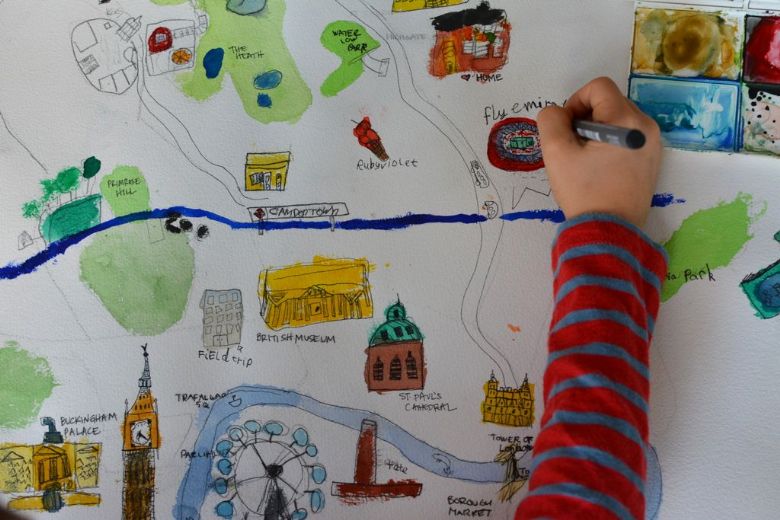
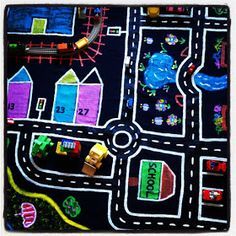
Y1 – Can you walk around your local area and try to draw a map? Can you add in any street names or features? Are there any post boxes, bus stops or shops you can draw on your map? Can you add your house onto the map too?
Y2 – Can you walk around your local area and try to draw a map? Can you add in any street names or features? Are there any post boxes, bus stops or shops you can draw on your map? Can you add your house onto the map too?
We would also like you to see if you can notice any differences between where you live and a seaside town like Cromer. Can you use Google Earth or Google Maps to spot any similarities or differences between Norwich and Cromer?
SCIENCE (FOR Y2)
Log on to Developing Experts. This week we continue to look at plants. If you cannot complete the mission assignment for could make predictions about what you think could happen in the different environments.
You can sign in to Developing Experts using the following details:
Website: https://developingexperts.com/accounts/pupil/sign-in
(email Mrs Ellis for this at rellis37ru@nsix.org.uk)
P.E.
real PE at home includes an online programme which supports families to be active, play and learn together. It includes a programme specifically for children in Early Years and Key Stage 1 with 12 themes, 6 areas, over 250 activities and challenges and 1000s of hours of fun and activity. This programme is also great for family play and fun.
There are so many benefits to being active, not only to our physical wellbeing but also to our emotional and mental health, especially in such testing times for all of us. We hope that the ideas help support you and your family to stay fit and healthy in the coming months. Here are the details to access real PE at home:
The website address is: home.jasmineactive.com
Parent email: parent@garrickgre-1.com
Password: garrickgre
MUSIC
Have a sing along to Power in me…https://www.youtube.com/watch?v=5CAL3OC-Qfk
READ
Please read every day. Your school book, a magazine, story book, non-fiction book, https://www.oxfordowl.co.uk/for-home/find-a-book/library-page

